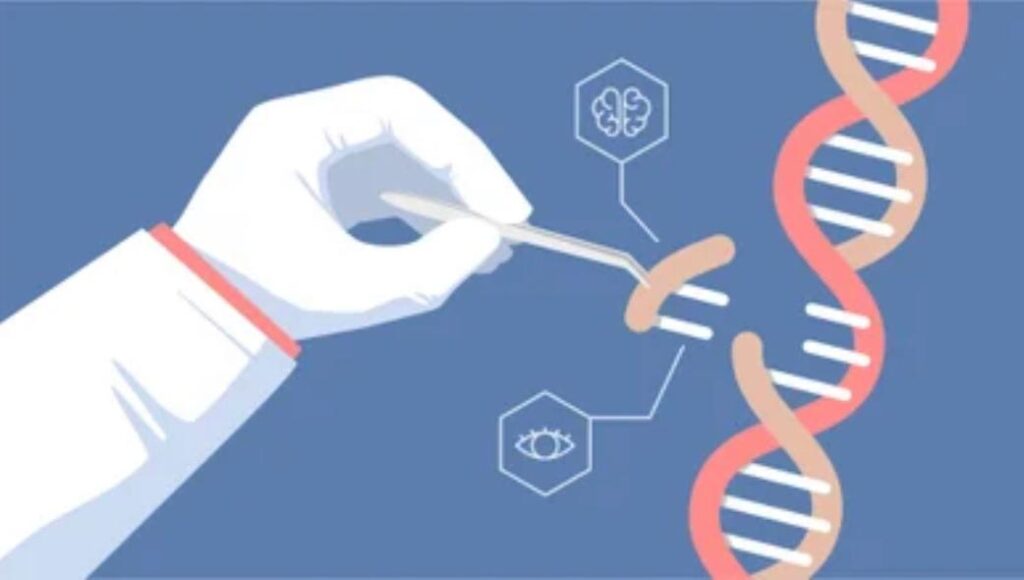The Evolution of CRISPR
Even though CRISPR is still pretty recent technology, it was first studied as early as 1987 by a Japanese scientist, Yoshizumi Ishino. The discovery came about when a string of E.coli bacteria was found resisting a series of bacteriophages (bacteria-eating viruses) by selectively cutting their DNA. Eventually, after much hardcore research; Professors Jennifer Doudna and Emmanuelle Charpentier along with their team of researchers finally developed the most recent version of this miraculous gene editing technology which -rightfully- earned them a Nobel chemistry prize in 2020.
A brief Overview of Gene Editing
Gene or genome editing, traditionally, describes a process by which targeted and deliberate changes to the DNA sequence are made by the use of endonuclease enzymes (enzymes that catalyze the breakdown of DNA molecules at specific sites). Contrary to what most people would think, the enzymes are not the direct cause of gene inhibition, instead, it’s the repair mechanism of the cell that renders the gene useless. The basis of gene editing relies on initiating a double-strand break (DSB). The introduction of a DSB will initiate either the nonhomologous end joining (NHEJ) pathway of DNA repair, which is very useful for gene disruption, as DNA has to be rebuilt, making it much more error-prone or homologous repair (HR), which allows for the integration of a donor/backup sequence at the target site. These pathways both have a chance of causing a mutation in the DNA sequence and disabling it; however, they are comparatively inaccurate and can cleave the DNA at completely incorrect sites, leading to deadlier problems.
The Biological Breakthrough of The Century
Since the introduction of CRISPR (clustered regularly interspaced short palindromic repeats), advanced gene editing and the cure to genetic and hereditary diseases are no longer a pipe dream but a working reality! There have been past advances for gene editing in plants and microorganisms; however, it was incredibly expensive and quite imprecise, but with the help of CRISPR it’s become cheaper and more efficient than ever!
The CRISPR Cas 9 protein is an enzyme that works by cutting DNA sequences of cells at specific points that are determined by the RNA sequence attached to it, its a method almost identical to the original genome editing techniques; however, the RNA companion strand gives way for a much more accurate and clear cut of the DNA sequence, mainly because the RNA strand is used as a template which binds to a specific set of DNA bases only. This incredible technology can be used for curing many genetic abnormalities including, but not limited to muscle atrophy, hemophilia, and, quite possibly cancer.
As well as extracting genes, CRISPR can insert DNA sequences to enhance specific features or counteract others. This application was first used in 2021 when a tomato became the very first genome-edited food made with CRISPR–Cas9 technology to be available on the market. These genetically modified tomatoes have been sold directly to consumers in Japan by Tokyo-based Sanatech Seed. They contain high amounts of γ-aminobutyric acid (GABA), which the company claims when taken orally, can help support lower blood pressure and promote relaxation.
Contributions of The Arab World
Researchers at the United Arab Emirates University (UAEU) have effectively progressed the gene-editing technology CRISPR-Cas9 to grasp pathogenic metabolic mechanisms which might provide a pathway to further develop gene editing techniques. For most probably the first time in the UAE, scientists at the College of Medicine and Health Sciences have used the newly-developed and ground-breaking gene editing discovery, CRISPR-Cas9, to disqualify a gene from lines of human cell cultures. In addition, they have used these cell cultures to study the harmful mechanisms of some genetic diseases found in the Emirates, with some potential implications for developing gene therapy in the African and Middle Eastern regions.
